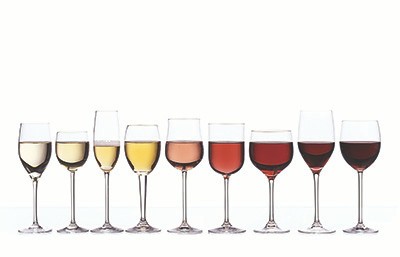Using Software and Liquid Chromatography to Determine Your Next Glass

By: Ashley Peterson
Next Glass, a startup company based in Wilmington North Carolina is a made up of a team of chemists who are hard at work to create a brand new Ap that will make beverage recommendations using the powers of liquid chromatography and ion trap mass spectrometry.
The concept is the brain child of 25-year old Next Glass founder, Kurt Taylor who is neither scientist nor sommelier. The idea came to him one night after asking a waiter for a wine recommendation. The waiter assured him that each sip of his selection would be “more elegant than the last”, but was presented with something he utterly hated. The program is based on the idea that despite rating systems and “expert opinions”, there is really is no universal language when it comes to wine and beer and that individual tastes are very subjective. If only there was a way to recommend beverages the same way Pandora recommends music — by creating entire playlists of selections similar to a user’s favorite songs and artists.
Taylor quit his job and set out to bring his idea to life. He acquired support from investors and his alma mater, the University of North Carolina and built a team of both scientists and software engineers. Programs like Pandora and Netflix are based on classification algorithms supported by data from music and movie experts. Next Glass, however must be largely built on science.
Enter the Next Glass team of chemists. Their mission is to test about 98% of the readily available US market – 25,000 wines and 10,000 bears – by the time the application launches in summer 2014. Obviously, a traditional taste-test method would not work here. According to Taylor, “We had to figure out another way to define these bottles without any subjectivity or having any human interaction on the data collection side. That’s when we realized that wine and beer are different than music and movies in the sense that you can run them through a scientific instrument and learn exactly what compounds make them up.”
The testing process begins with the extraction of a sample from a sealed bottle of wine or beer. The sample is analyzed using a mass spectrometer with Thermo Scientific Orbitrap technology, providing information that is mathematically converted into a spectrum of compounds—thousands for each beverage—that functions as that beer or wine’s "DNA." Each product’s DNA is added to a database from which the application’s software can match a users’ taste preference based on beverages they enjoy. A taste profile is created for each user, allowing them to discover new wines and beers that align with their palate. Users can even take it one step further and merge their profile with another user to find a product that both parties enjoy.
Taylor plans to release the application for smartphones and tablets this summer. It will be free for the user and will likely be monetized through the back end. Stores, bars and restaurants will pay to have their inventory on the roster but the analytics they can provide to the wine and beer industries will be quite valuable.
"We want to make it fun," Taylor said. "We want you to go into a store, interact with our application, and know with confidence that you're going to pick something that you're going to enjoy that night."
